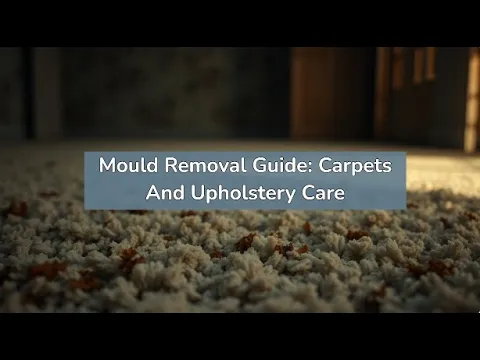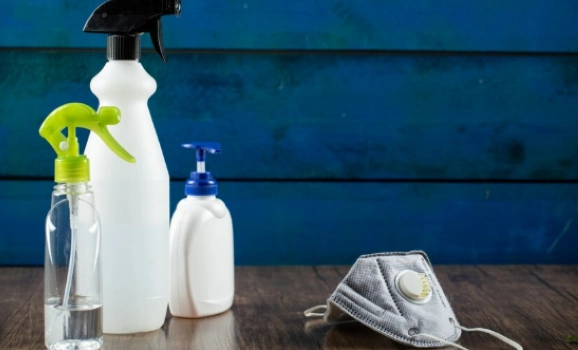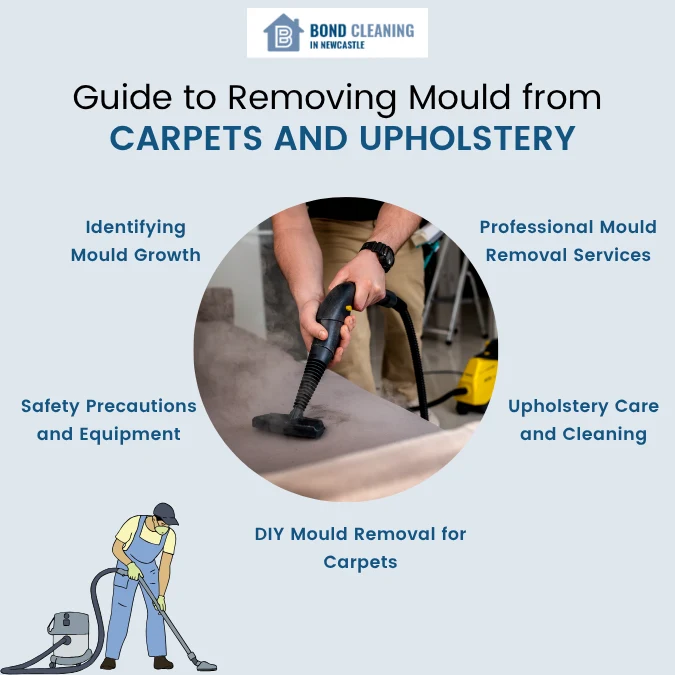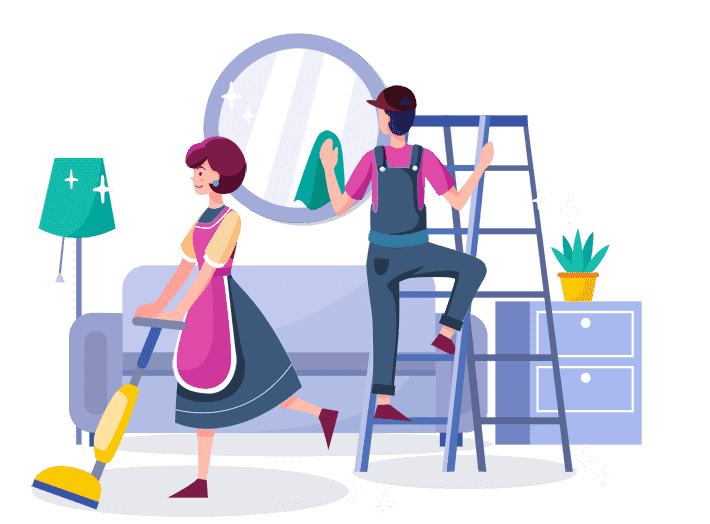
Mould Removal Guide: Carpets And Upholstery Care
You spilled a drink on your carpet last Thursday and thought you cleaned it up—until a musty smell started creeping into your living room a few days later. Sound familiar? Mould thrives in damp and hidden spots, and soft furnishings are the perfect hosts for it. Its occurrence on carpets and furniture not only destroys the materials and fabrics but also creates serious health threats in the form of allergies, respiratory diseases and dermatitis. For both renters and homeowners, it is important to eliminate mould effectively in order to have a healthy and liveable home.
This guide provides key steps and procedures for the removal of mould, specifically from carpets and upholstered furniture. It incorporates professional methods and home tips to enable you to keep a clean, mould free environment; something particularly for those in need of expert End of Lease Cleaning Newcastle services. Whether you want to tackle the mould yourself or hire professionals, this article will provide you with the information you need to keep your living space safe, healthy and ready for the next chapter of your life.
1. Identifying Mould Growth
Before the removal process begins, it’s important to understand what type of mould and the extent of what you’re dealing with, as different kinds need different approaches. Mould may appear as black, green or grey patches on fabrics and upholstery and can give off a musty odour (you can often smell mould before you see it). Areas where the humidity levels are high, such as basements or rooms with water leaks, can become prime breeding grounds for mould. So, check for mould using a flashlight under carpets, around skirting boards and beneath cushions to uncover hidden colonies. Quick identification can help prevent the spores from spreading.2. Safety Precautions and Equipment

When dealing with mould you should always wear protective gear. Loose mould spores can be very detrimental to your health if they happen to enter your lungs or airways, so to keep yourself safe, always wear gloves, an N95 respirator mask and safety goggles to protect yourself from airborne spores. Ensure that there is proper ventilation in the area that you’ll be working in by opening any windows or using fans to improve air circulation.
You’ll need basic cleaning tools such as scrub brushes, spray bottles, microfiber cloths and a vacuum cleaner with a HEPA filter. Using the right protective gear not only helps keep you safe but also ensures that your cleaning efforts are effective and prevent contaminating other parts of your home.
3. DIY Mould Removal for Carpets
For light to moderate mould infestations on carpets, a DIY approach may suffice. Start by vacuuming the affected area with a HEPA filter vacuum to remove all loose spores. Next, treat with a solution of white vinegar and water or hydrogen peroxide, spraying it generously on the affected areas and letting it sit for 10–15 minutes. Then, scrub the area with a brush and blot dry with towels.
Once all this is done, sprinkle baking soda over the carpet to absorb any residual moisture and odours. After several hours, vacuum again. This method is cost effective and ideal for small mould patches, but for severe cases, professional help may be necessary.4. Upholstery Care and Cleaning
Upholstery requires a more delicate approach. Start by removing any detachable covers and laundering them if the care labels allow it. For fixed upholstery, vacuum the surface and crevices using an upholstery attachment.- Apply a mild cleaning solution of white vinegar and dish soap diluted in warm water.
- Dampen (don’t soak) a microfiber cloth and gently blot the mouldy area.
- Avoid over wetting as it can worsen mould growth.
- Finish by dabbing the area with a clean, dry towel and allow it to air dry thoroughly in sunlight or a well ventilated
This method is particularly useful in rental situations, where maintaining furniture condition is a key aspect of meticulous End of lease Cleaning Newcastle standards.
5. Professional Mould Removal Services
When mould has spread extensively or affected padding and underlays, it’s time to call in the professionals. Mould remediation experts use industrial grade equipment, including steam cleaners, ozone generators and anti fungal agents to ensure a thorough clean. They can assess moisture levels with digital meters and identify the source of dampness to prevent recurrence. Hiring professionals may seem like an additional cost, but it offers peace of mind, especially important when handing over a rental property and ensuring that it meets strict End of lease Cleaning Newcastle criteria for cleanliness and safety.6. Prevention and Long Term Maintenance
Preventing mould is just as important as removing it. Maintain indoor humidity below 60% by using dehumidifiers or air conditioners. Fix leaks promptly and avoid leaving wet clothes or spills on carpets and upholstery. Place rugs in high traffic or moisture prone areas and ensure proper ventilation in rooms with limited airflow. Regular vacuuming with a HEPA filter, using moisture absorbers like silica gel and rotating furniture to expose it to air and light are all practical habits that help in long term mould prevention in your home.Guide to Removing Mould from Carpets and Upholstery

Wrapping Up
Mould can quickly turn a clean home into a health hazard if not addressed promptly and effectively. Whether you opt for DIY solutions or professional services, removing mould from carpets and upholstery requires attention to detail, patience and a focus on prevention. With proper care, vigilance and the right techniques, your home can remain fresh, safe and mould free throughout every season. Happy Cleaning!

